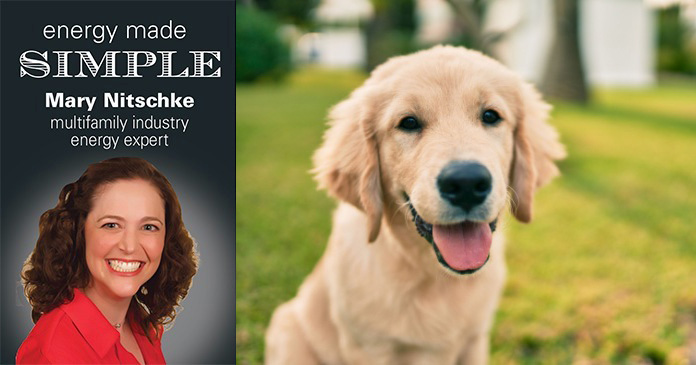Rolling out a composting program on a multifamily property is hard. It smells. It is super confusing. It is also not always delightful to talk about. I am going to make it worse. Let’s talk about pet waste and your composting program. Long story short: pet waste of all kinds belongs in the trash bin, not in the composting bin.
First, let’s start with our canine friends. Typically, dog waste is bagged and tied. For the record, this waste should be bagged for a variety of reasons. I do recommend compostable bags for pet waste, otherwise you are preserving something super gross for a super long time. However, the compostable bag is not a signal to put pet waste in your compost container.
I know this is confusing; you have an organic material in a compostable bag, so you think you are ok, right? Not exactly. Depending on the composting process, the bags themselves may not break down. Then let’s talk about the contents of the bag. Pet waste contains bacteria which, if the composting process is not hot enough to degrade the compostable bag, chances are it is not hot enough to kill the bacteria. This means that the compost will not be safe for plants or crops, so the haulers typically refuse to service the container when they see those little pet waste bags. I have seen haulers require the site teams relocate all the material in the composting container to the trash dumpster when they see pet waste.
Now let us talk about cat litter. Even when cat litter indicates that it is compostable, it does not go into the compost container. It belongs in the trash. Again, I have seen haulers refuse to service the compost containers when the bins contain cat litter. Frankly, this makes total sense to me. Fun fact, cat litter is highly flammable. Back in the days when smoking was permitted on properties, I once saw an entire building of a garden style community burn to the ground because an uninformed resident used cat litter in an ash tray on their balcony. Fortunately, no deaths or injuries occurred but people lost possessions and were displaced. If the composting system used by the hauler is high heat or waste to energy, that cat litter is a huge liability. Wilted celery is not highly flammable, cat litter is.
The point is, you do not know what process the hauler’s facility is using to break down the organic waste into compost or energy, so it is best to leave the pet materials out.
When rolling out a composting program, I strongly recommend that, if your community permits pets, you spend a little time educating your residents and team regarding the permitted materials for the compost containers. If you do not see pet waste as an acceptable item, I recommend making sure your residents understand that pet waste should continue to be disposed of in trash containers. This will save you time and money down the road.















